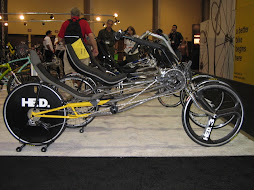
China's dust clouds have been getting some attention around the world of late. To be honest I am a little afraid for Japan on this account, due to proximity. The dust can noticably impare air quality as far away as Tokyo, and it seems the effects are felt elsewhere also - in fact, just about everywhere.
A Japanese study using a NASA satellite has apparently found that one 2007 storm in China's Taklimakan desert made "made more than one full circle around the globe in just 13 days" according to this Reuters article.
A frightening thought and yet another reminder that there can be no shirking from dealing with the effects of global environmental damage, of which climate change is really just one element. Americans, Canadians and Europeans can no longer export the environmental impact of their consumption to China and the developing world without facing the consequences directly.
On a side note, I notice that the article also quotes the researchers as saying that "Dust clouds contain 5 percent iron, that is important for the ocean." It has been said that iron in the ocean can increase absorbtion of carbon dioxide, reducing the impact of global warming. Ironically (pun intended) this means that the dust storms - perhaps themselves partly a consenquence of global warming as well as urbanization and bad land use practices, may also be mitigating the impact of CO2 emissions elsewhere.
An interesting thought, and really in line with the somehow comforting Gaia concept of an essentially self-regulating Earth environment - including living and non-living elements. That is, until you imagine life with lots of big dust storms like this and realize that this particular "self-regulation technique" does not a nice living environment make for us humans...cough cough

